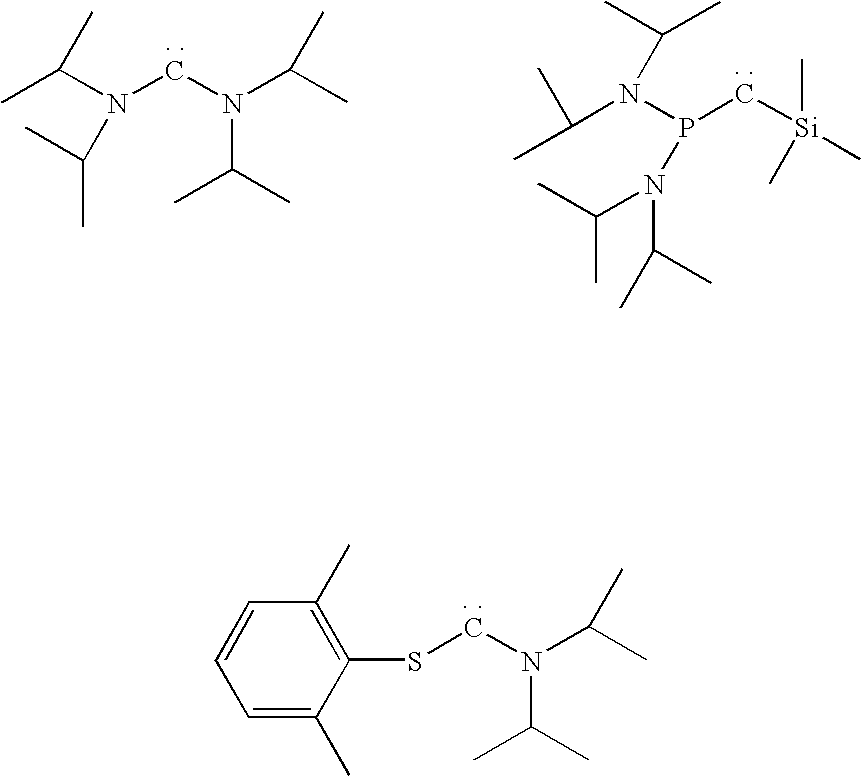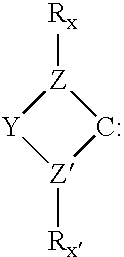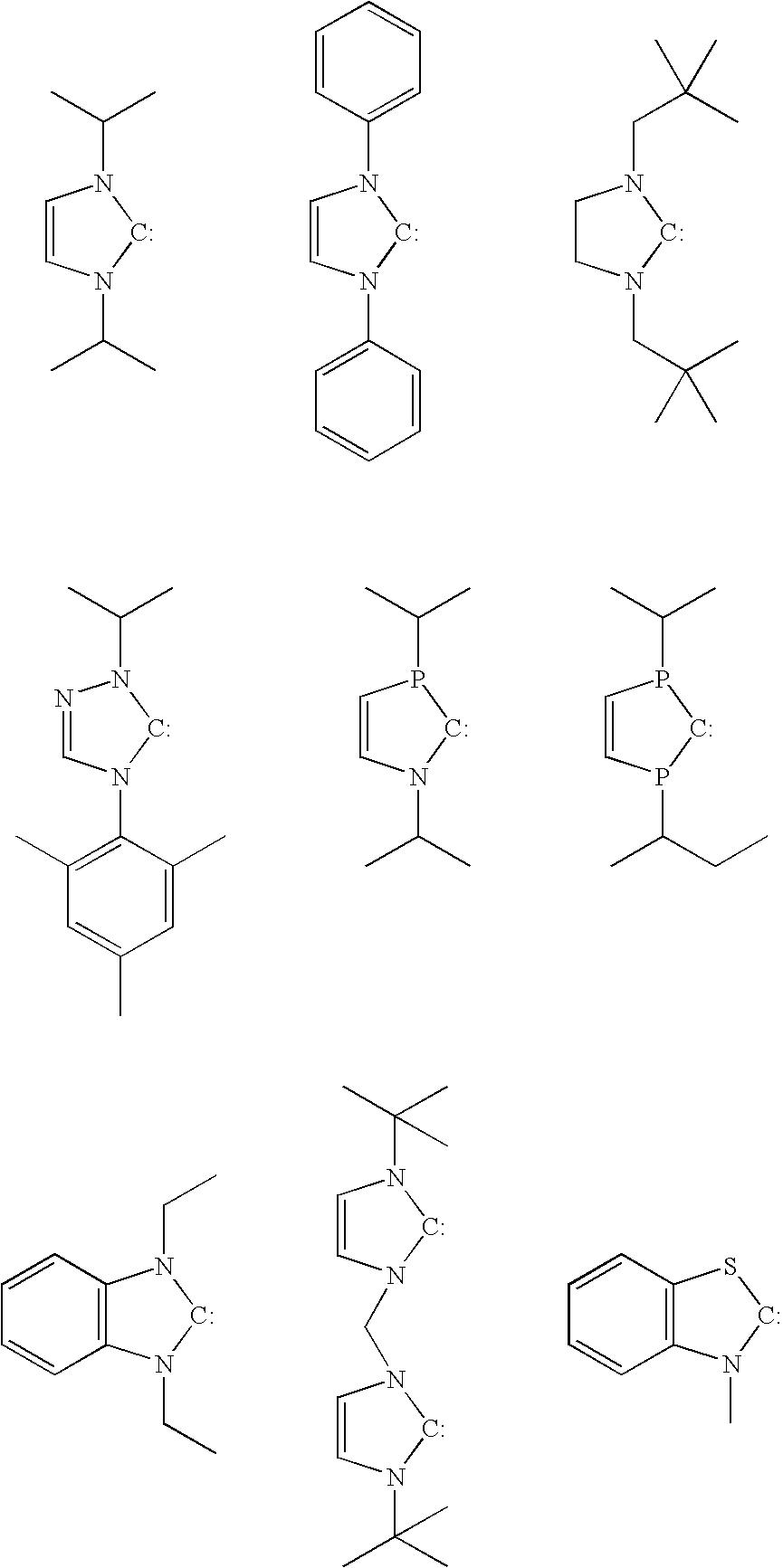Carbene donor-modified Ziegler-Natta catalysts
a technology of zieglernatta and carbene donor, which is applied in the field of zieglernatta catalyst systems, can solve the problems of high cost of activators, and difficulty in titanium complex, and achieve the effect of improving catalyst activity and/or stereospecificity
- Summary
- Abstract
- Description
- Claims
- Application Information
AI Technical Summary
Benefits of technology
Problems solved by technology
Method used
Image
Examples
example 1
Preparation of a Ziegler-Natta Catalyst with Titanium Tetrachloride, Magnesium Ethoxide, and a Carbene Donor
[0033]
[0034]Titanium tetrachloride (100 g) is injected into a suspension of magnesium ethoxide (10 g) in 100 mL of toluene, and the temperature is raised to 90° C. The carbene, 1,3-diisopropylimidazol-2-ylidene, 1, prepared by the method described in J. Organometal. Chem. 663 (2002) 192 (0.01 mol) is then added, and stirring continues for 2 hours. The solid reaction product is filtered and washed with toluene (2×50 mL). The solids are suspended in 100 mL of fresh toluene and 5 g of titanium tetrachloride is added. The mixture is stirred for 2 hours at 110° C. The product is filtered, washed with hexane, and dried under vacuum. A solid catalyst is the expected product.
example 2
Preparation of a Ziegler-Natta Catalyst from Spherical Magnesium Chloride, Titanium Tetrachloride, and a Carbene Donor
[0035]
[0036]Magnesium chloride (30 g) and 1-methyl-3-isobutylimidazol-2-ylidene, 2, prepared by the method described in J. Organometal. Chem. 663 (2002) 192, (0.01 mol) are placed in a 1-liter steel ball-mill (fifty 25 mm balls) under nitrogen and rotated at room temperature for 30 hours. A portion of the product (10 g) is reacted with titanium tetrachloride (200 mL) at 50° C. for 2 hours. The product is filtered, washed with hexane, and vacuum dried. A solid catalyst is the expected product.
example 3
Preparation of a Ziegler-Natta Catalyst from Magnesium Chloride and a Titanium Tetrachloride / Carbene Donor Complex
[0037]
[0038]Titanium tetrachloride (0.1 mol) is added dropwise to a slurry of 1-methyl-3-(2,4,6-trimethylbenzyl)imidazol-2-ylidene, 3, prepared by the method described in J. Organometal. Chem. 663 (2002) 192 (0.1 mol) in 100 mL hexane at room temperature. After 3 hours of stirring at 40° C., the solid product is separated by filtration, washed with hexane, and vacuum dried. A portion of the product (2 g) is combined with ball-milled magnesium chloride (30 g) in a 1-liter steel ball-mill (fifty 25 mm balls) under nitrogen and rotated at room temperature for 30 hours. The product is washed with hexane and vacuum dried. A solid catalyst is the expected product.
PUM
| Property | Measurement | Unit |
|---|---|---|
| pressure | aaaaa | aaaaa |
| pressure | aaaaa | aaaaa |
| temperature | aaaaa | aaaaa |
Abstract
Description
Claims
Application Information
 Login to View More
Login to View More - R&D
- Intellectual Property
- Life Sciences
- Materials
- Tech Scout
- Unparalleled Data Quality
- Higher Quality Content
- 60% Fewer Hallucinations
Browse by: Latest US Patents, China's latest patents, Technical Efficacy Thesaurus, Application Domain, Technology Topic, Popular Technical Reports.
© 2025 PatSnap. All rights reserved.Legal|Privacy policy|Modern Slavery Act Transparency Statement|Sitemap|About US| Contact US: help@patsnap.com



